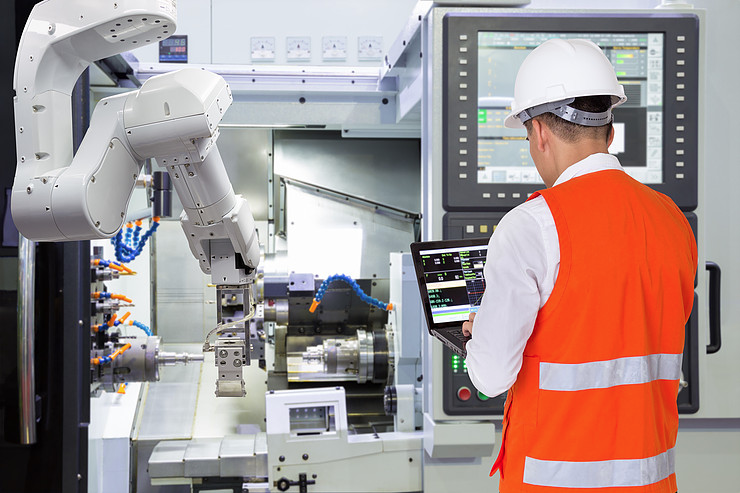I believe that the Industry 4.0 / Smart Factory technologies that are already or will soon be available will be a major disrupter in the manufacturing space. Companies that fail to invest in these solutions will find themselves at an equal or greater disadvantage than companies that failed to adopt lean solutions earlier this century. There are challenges, but these challenges are all very surmountable.
Twenty-five years ago, the plant I managed had a system for tracking machine speeds, uptime, and data from a couple other sensors. I could see this information on my desktop PC, which gave me an alert when a machine went down. Like most shop floor systems at the time this was a standalone system and was supported by plant personnel. Using data from this system required manual entry into a spreadsheet, which was done daily as part of our daily production and efficiency reports. At that point there wasn’t a LAN in the plant, much less an Internet connection. There was also no IT support for utilizing the data.
After my time as a plant manager, I became a CIO, and one of my first initiatives was to deploy a new WAN/LAN architecture throughout the organization. Across this new architecture we ran new business applications, like our ERP and email. There was no integration of shop floor systems because: a) the data coming off these systems needed too much interpretation to be used directly, and b) the maintenance and engineering people in the plants and the IT staff saw themselves offering different independent sets of services. Because of this the shopfloor systems by and large remained standalone systems.
A lot has happened in the IT world over the last 20 years, and today the lines between operations and information technology are blurring. New sensing technologies combined with the Internet of Things (IoT) allows us to gather enough data to create virtual twins for modeling manufacturing lines. Big data and advanced analytic capabilities including Artificial Intelligence (AI) and machine learning allow us to gather and quickly make sense of all the available data. Product tagging and pervasive wireless allow us to track, validate and trace parts through the supply chain and within the factory. And the ability of machines to talk to business systems and each other enables new levels of automation. In short what is being referred to as Smart Factories, or Industry 4.0, is based on capturing all the available data and using it to make effective decisions in real time.
However, many companies are struggling to take advantage of these breakthroughs which can improve speed by 33% and reduce costs by 25% because of four major challenges which are: 1) required investment, 2) cybersecurity, 3) interpreting the data, and 4) gaps between operations and information technology. The investment challenge can be overcome by understanding the business cases behind the new technologies and coming up with a rational approach to applying them in a step by step manner. Done correctly the value created by the initial projects can be used to fund the entire program.
Most of the sensors, controllers and shop floor systems I’ve observed were designed as standalone systems. Because of this most are not designed to be properly secured in a highly connected environment. Fortunately, there are approaches available to mitigate these risks. These start with network segmentation and hardening to limit the damage of malicious actors. Well-designed architectures also take advantage of network monitoring and anomaly detection tools to rapidly detect and respond to threats. These solutions need to be put in place as part of the decision to connect any device to your network. The alternative is to find yourself in the same position Target faced, when a compromised HVAC controller lead to the exposure of sensitive customer data.
The same diversity of devices that creates cybersecurity issues also creates challenges in interpreting the data, as different systems can and do transmit the same data in different formats. Data standards, data tags and data governance are required to allow data to be loaded into your data repository in a manner that is interpretable by today’s analytic tools. There are many vendors offering solutions to help with overcoming the data interpretation challenge, but to be truly effective organizations must recognize the importance of managing their data and applying the appropriate resources to this work.
The time when a company can afford to have independent operational and information technology solutions has passed. Looking at all the data holistically is what is driving real benefit. This means organizations must adopt approaches to integrate skills that historically were found in different parts of the organization. Creating agile teams that include manufacturing engineering, control systems, and information technology expertise to drive your Smart Factory initiatives is the best practice for creating value.
Smart Factories: Melding Operations and Information Technology




